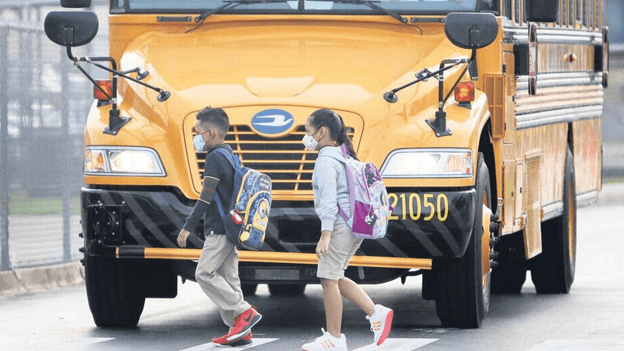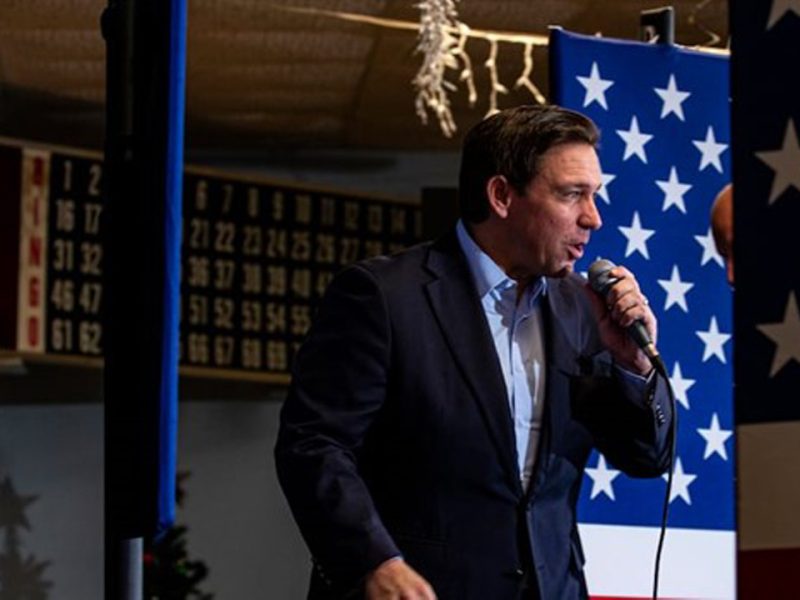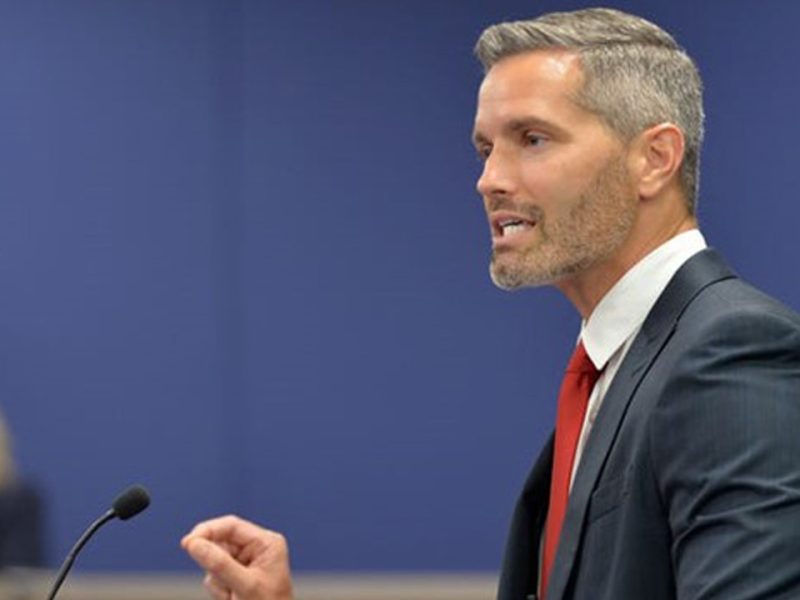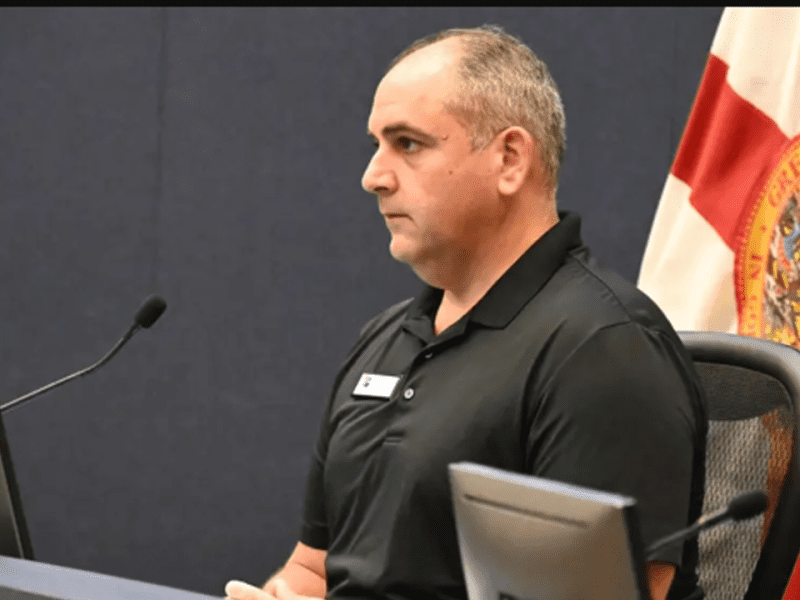
Florida Republicans promise school vouchers for all but don’t reveal funding plan
Miami Herald | By Jeffrey S. Solochek and Ana Ceballos | January 25, 2023
Florida Republican lawmakers this year will consider offering every K-12 student thousands of dollars each year for their families to spend on education.
Parents would have access to state-funded accounts and use them to pay for private school tuition plus a wide variety of school-related expenses.
The proposal, if approved, would make the state’s school voucher program bigger than ever. But one key fact about the pitch remains elusive: its cost.
House Speaker Paul Renner said last week he plans to make the proposal, House Bill 1, a priority during the annual legislative session, which starts March 7.
The measure is already being fast-tracked. It will have its first committee hearing Thursday morning in Tallahassee. So far, the measure carries no financial impact statement. That’s despite the knowledge that hundreds of thousands more children would be eligible for annual payments of about $8,000 each.
The cost, according to the staff analysis, is “indeterminate.”
And that “is not reasonable,” said Norín Dollard, a senior research analyst at Florida Policy Institute, a nonpartisan organization that focuses on quality of life issues for Floridians. The group issued a report on voucher funding in September.
HUNDREDS OF THOUSANDS NEW STUDENTS WOULD BE ELIGIBLE
About 266,000 Florida children attend private schools without using any current state scholarship or voucher, Dollard notes. All would be eligible for education savings accounts under the proposal.
In addition, approximately 150,000 children receive home schooling. HB 1 would provide accounts to as many as 10,000 of them in the first year, with more to come in following years.
Conservative back-of-the-napkin math suggests that if just 25% of the newly eligible students participate, and those currently in the program remain, the added cost would reach $600 million, Dollard said. As participation grows, the total could approach $4 billion or more within five years, she added.
If that’s the policy decision in leadership, so be it, Dollard said. But it needs to be funded somehow.
A RECURRING FINANCIAL OBLIGATION
State Rep. Anna Eskamani, D-Orlando, focused on that issue during a hastily called Monday evening Zoom meeting to discuss the measure with public education advocates.“
“We have very, very serious concerns,” Eskamani said during an interview. “This is an annual shift of money. Where is it coming from?”
When unveiling the measure at a news briefing, Renner said it was too early to know how much money might be needed. Much depends on how many children want to avail themselves of the vouchers, he said, and where the Legislature sets per-student funding for the year.
At the same time, Renner stressed his goal is to further open school choice so “no one is left out.” The bill would eliminate most eligibility restrictions, though it would prioritize children whose family income is at or below 185% of the federal poverty level — or $55,500 for a family of four.
It also would broaden uses of the money beyond private school tuition to include education expenses such as tutoring, testing and college courses. It would allow students to bank up to $24,000 for those uses, and further permit children already attending private schools without state support to request a share of the funds.
“To effectively deliver a quality education, policy makers and education advocates must accept that every student has unique learning needs, that education dollars belong to the student and not a system, and that public school choice offers every student an opportunity to customize their own education,” Renner said Tuesday, when asked about the associated costs.
A SPIKE IN PARTICIPATION IS EXPECTED
Dollard and others said they anticipate wide interest in participation, with much of it coming from families already paying for private schools. In Arizona, which has a similar education savings account program, the state reported 80% of applicants never attended public schools.
That flips the idea of money following the student on its head, Dollard suggested, because those students never had their education covered by state money in the first place.
School district finance officers said they understood the leadership’s position that the details aren’t firm enough to know the full financial impact.
But using the state’s most recent voucher expansion plan as a guide, they had concerns that this initiative would take money away from district budgets and leave them little ability to plan.
That’s what happened the last time the state expanded vouchers in 2021 with the taxpayer-funded Family Empowerment Scholarship. Officials touted the program as adding $200 million for vouchers, allowing 61,000 more children to afford private school.
Districts saw some money go out the door, but nothing like what happened in 2022. Halfway through the 2021-22 school year, school budget officers across the state learned that three times the amount of money they had set aside to send to voucher programs would be required, based on updated attendance figures from the state.
In some counties, such as Pasco, efforts to provide employee raises were derailed as the money officials expected to use was diverted to the vouchers. All told, the cost had grown to $1 billion.
The current year has provided similar sticker shock. The Legislature approved a budget with no specific amount set for the scholarships.
By the second education funding calculation in July, the price tag had increased to $1.3 billion. That meant the Miami-Dade County school district would have to send $225 million from its budget to the voucher program, for example, and the Hillsborough County school district would send $75 million.
When the third calculation came out this week, districts learned they would be losing even more.
If the state lifts the eligibility restrictions, Pinellas County Schools chief finance officer Kevin Smith predicted, it will become even more difficult to predict the financial impact. He suggested the state should at least consider taking the money out of the public education funding program and create a separate line item.
That way, schools would know what to expect and they could budget appropriately.
In recent years, the DeSantis administration has taken the position that unexpected changes in enrollment can pose a financial strain on local school districts.
Jacob Oliva, Florida’s outgoing K-12 chancellor, testified in federal court earlier this month that an influx of migrant students in Florida puts “significant strain” on districts’ spending plans because of enrollment increases.
The testimony was a key argument Florida made in court as it tries to prove the Biden administration’s immigration policies are harming Floridians, in part because the situation at the border is costing the state more money.
At the end of the day, Dollard said, it should be incumbent upon the people promoting the idea of voucher expansion to explain to taxpayers how they plan to pay for it.
“They are expanding the obligations of the school system without providing resources,” she said. “If there’s no revenue source, it has to come out of the [funding stream] that exists.”
A spokesperson for Senate President Kathleen Passidomo said her chamber is reviewing the House bill, including the potential costs. Passidomo has expressed her support for the measure.





